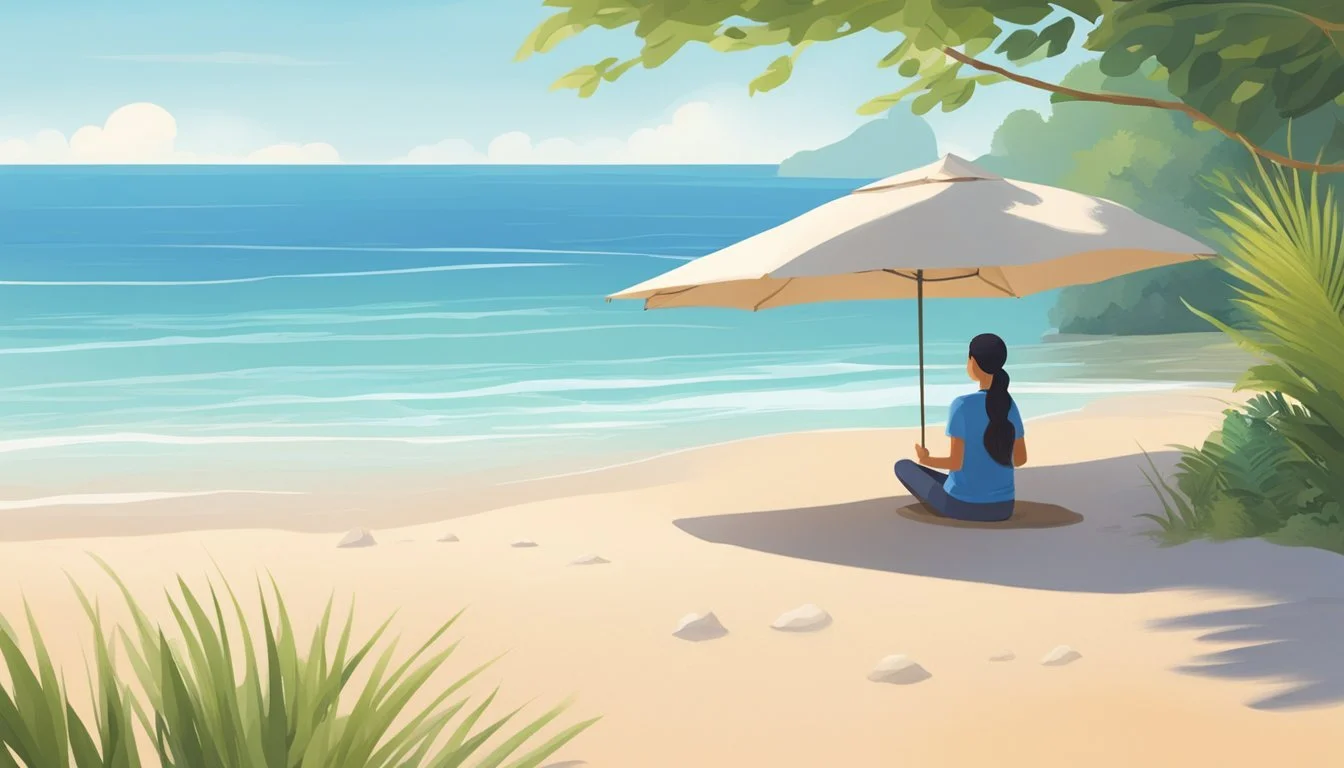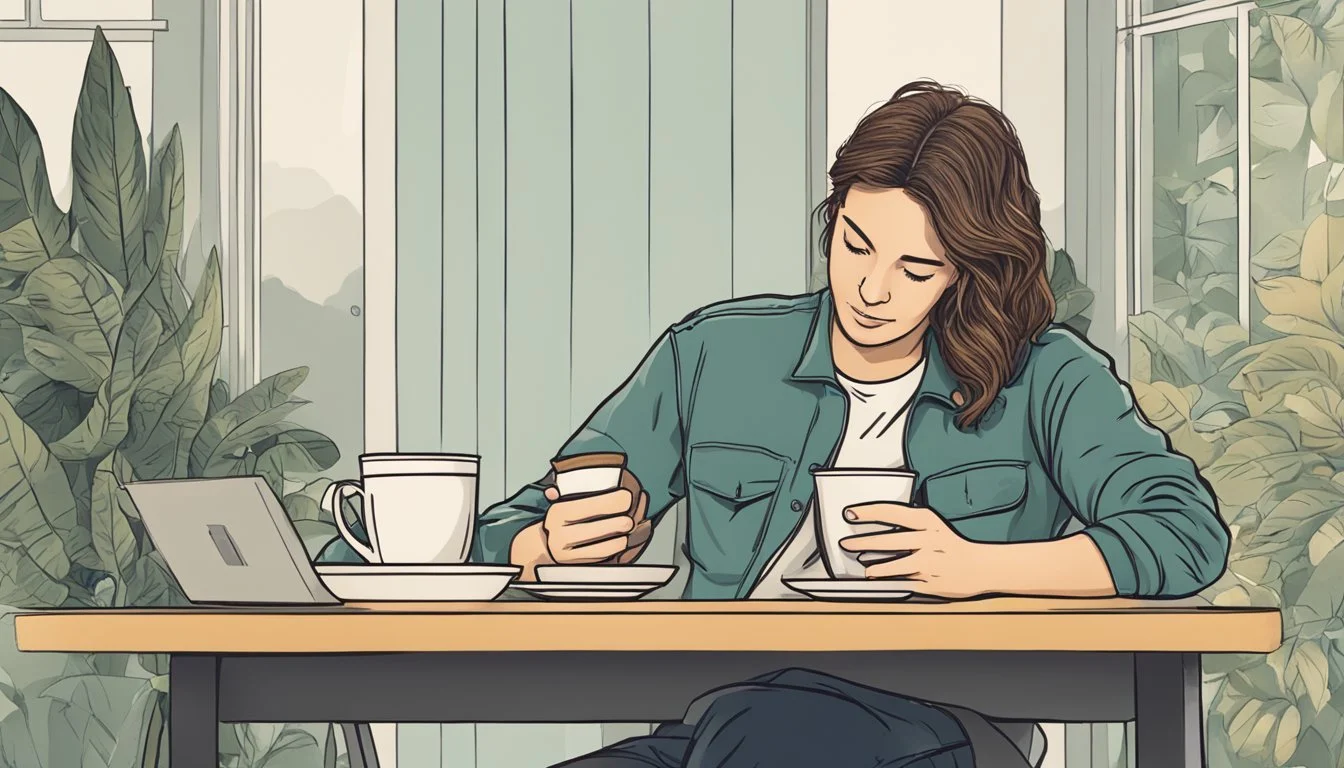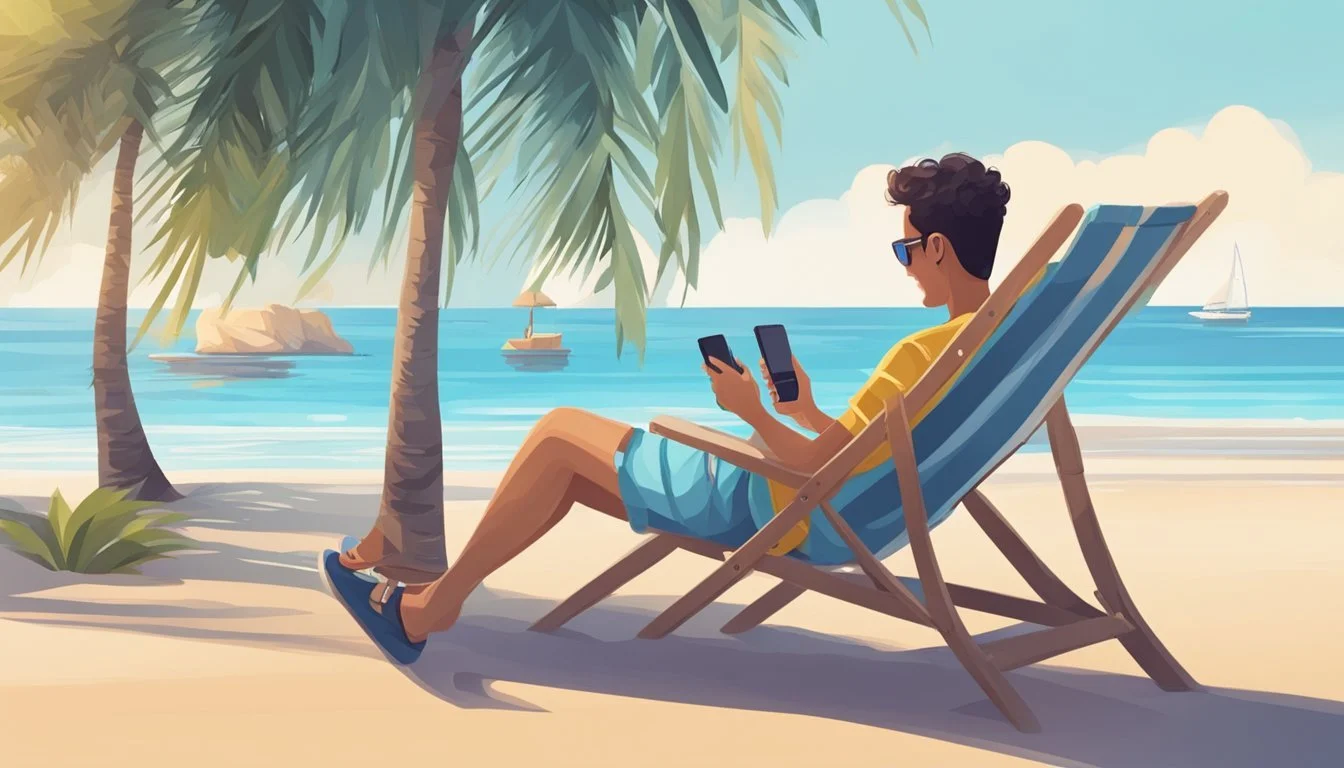8 Travel Tips for Managing Anxiety While on Vacation
Stress-Free Getaways Made Easy
Traveling can be an exciting and enriching experience, but for many people, it also comes with a side of anxiety. The unfamiliarity of new places, disrupted routines, and unexpected challenges can trigger stress and worry. Understanding common anxiety triggers and implementing coping strategies can help travelers manage their fears and enjoy their vacations more fully.
This article explores eight practical tips for dealing with travel anxiety. These strategies are designed to help individuals feel more in control, reduce stress, and make the most of their trips. By incorporating these techniques, travelers can build confidence and resilience, allowing them to embrace new experiences and create lasting memories without being held back by anxiety.
1) Practice deep breathing exercises
Deep breathing exercises can significantly reduce travel anxiety. These techniques help calm the nervous system and promote relaxation. One effective method is the 4-7-8 breathing technique.
To practice this technique, inhale through the nose for four seconds. Hold the breath for seven seconds. Then exhale slowly through the mouth for eight seconds. Repeat this cycle several times.
Another useful exercise is diaphragmatic breathing. Place one hand on the chest and the other on the stomach. Breathe in deeply through the nose, allowing the stomach to expand while keeping the chest relatively still.
Box breathing is also beneficial for managing anxiety. Inhale for four counts, hold for four counts, exhale for four counts, and hold again for four counts. Visualize tracing the sides of a square while performing this exercise.
These breathing exercises can be done anytime, anywhere during travel. They're particularly helpful during stressful moments like takeoffs, turbulence, or navigating unfamiliar places.
2) Create a relaxing music playlist
Music can be a powerful tool for managing anxiety while traveling. A well-curated playlist can help calm nerves and create a soothing atmosphere during stressful moments.
When selecting songs, focus on slower tempos and gentle melodies. Instrumental tracks, classical compositions, and nature sounds often work well for relaxation purposes.
Consider including familiar songs that bring comfort and positive memories. These can provide a sense of familiarity in unfamiliar surroundings.
Make the playlist diverse enough to suit different moods and situations. Include tracks for sleeping, meditating, and general stress relief.
Store the playlist on a device that's easily accessible during travel. Ensure it's downloaded for offline use to avoid streaming issues in areas with poor connectivity.
Test the playlist before the trip to ensure it effectively promotes relaxation. Adjust as needed based on personal preferences and responses to different songs.
3) Pack a familiar comfort item
Bringing a familiar comfort item can significantly reduce travel anxiety. This object serves as a tangible connection to home and can provide a sense of security in unfamiliar surroundings.
Common comfort items include favorite pillows, blankets, or stuffed animals. Some travelers find solace in wearing a cherished piece of jewelry or carrying a meaningful photograph.
For those who prefer discretion, smaller items like worry stones, fidget toys, or scented sachets can offer comfort without drawing attention. These can be easily tucked into a pocket or bag for quick access during stressful moments.
Comfort items engage the senses and can trigger positive memories or emotions. This sensory connection helps ground travelers and provides a calming focal point when anxiety starts to build.
Choosing an item that holds personal significance is key. The emotional attachment to the object is what makes it effective in reducing anxiety and promoting a sense of well-being while away from home.
4) Use a calming essential oil
Essential oils can provide a soothing effect for travelers experiencing anxiety. Lavender oil is particularly known for its calming properties. It can help reduce stress and promote relaxation during travel.
Other beneficial oils include bergamot, chamomile, and ylang-ylang. These scents can help ease tension and create a sense of calm. Travelers can apply a drop of oil to pulse points or use a diffuser in their hotel room.
For those new to essential oils, starting with a pre-made blend designed for relaxation can be helpful. These often combine multiple calming scents for maximum effect. It's important to dilute essential oils properly before applying to the skin.
Carrying a small bottle of essential oil or a scented rollerball makes it easy to use on-the-go. A quick inhale of a calming scent can help center the mind during stressful travel moments. Some travelers find it helpful to apply oils before boarding a plane or entering crowded spaces.
5) Limit caffeine intake during travel
Caffeine can exacerbate anxiety symptoms in some individuals, especially during travel. Reducing or avoiding caffeinated beverages like coffee, tea, and energy drinks may help manage travel-related stress.
Instead of reaching for a cup of coffee, travelers can opt for herbal teas or water to stay hydrated. Proper hydration is crucial for maintaining overall well-being and can help mitigate anxiety symptoms.
For those who find it difficult to completely eliminate caffeine, gradually reducing intake in the days leading up to a trip can be beneficial. This approach may help minimize potential withdrawal symptoms.
It's important to be mindful of hidden sources of caffeine, such as chocolate and certain medications. Reading labels and being aware of caffeine content in various foods and drinks can help travelers make informed choices.
Replacing caffeine with alternative energy-boosting activities like light exercise or short walks can provide natural stimulation without the potential anxiety-inducing effects of caffeinated beverages.
6) Schedule downtime in your itinerary
Planning downtime into your travel schedule is crucial for managing anxiety. Allocate specific periods each day for rest and relaxation. This allows you to recharge and process new experiences without feeling overwhelmed.
Choose activities that promote calmness, such as reading a book, taking a leisurely walk, or simply sitting in a quiet park. These moments of tranquility can help reset your nervous system and reduce stress levels.
Consider setting aside entire days with no planned activities. This flexibility allows for spontaneous exploration or additional rest if needed. It also reduces pressure to constantly be on the go.
Incorporate calming practices like meditation or gentle stretching into your daily routine while traveling. Even short sessions can significantly improve your mental state and anxiety levels.
Remember that vacations are meant to be enjoyable, not exhausting. By building in regular breaks and unstructured time, travelers can better manage their anxiety and fully appreciate their journey.
7) Stay connected with loved ones
Maintaining contact with family and friends can provide comfort and support during travel. Regular check-ins via phone calls, text messages, or video chats help alleviate feelings of isolation and homesickness.
Sharing experiences and photos with loved ones can create a sense of connection and reduce anxiety. It allows travelers to process their emotions and receive encouragement from those who know them best.
Time differences may present challenges, but scheduling communication in advance can ensure consistent contact. Setting specific times for calls or messages helps create a routine and provides something to look forward to during the trip.
Social media platforms offer another way to stay connected. Posting updates or sending private messages allows travelers to share their journey with multiple people simultaneously.
For those who prefer more privacy, sending personalized emails or postcards can be a meaningful way to maintain connections. This method allows for deeper reflection on travel experiences while keeping loved ones informed.
8) Plan activities you enjoy
Planning activities you enjoy can significantly reduce travel anxiety. Focus on incorporating experiences that bring you comfort and excitement into your itinerary.
Research local attractions, restaurants, and events that align with your interests. This could include visiting museums, exploring nature trails, or attending cultural performances.
Consider scheduling downtime between activities to prevent overwhelm. Balance busy days with relaxing ones to maintain a sense of calm throughout your trip.
If traveling with others, communicate your preferences and find compromises that satisfy everyone's desires. This ensures you have activities to look forward to each day.
Keep your plans flexible to allow for spontaneous discoveries or changes due to unexpected circumstances. Having a loose itinerary can reduce stress associated with rigid schedules.
Remember to include familiar activities that bring you joy at home. This might mean finding a local coffee shop, practicing yoga, or reading in a park.
Understanding Travel Anxiety
Travel anxiety can significantly impact vacation experiences. It stems from various sources and manifests through physical and emotional symptoms. Recognizing triggers and signs is crucial for effective management.
Common Triggers
Unfamiliar environments often spark travel anxiety. New locations, cultures, and routines can feel overwhelming. Transportation concerns, such as fear of flying or getting lost in an unknown city, frequently contribute.
Language barriers may cause stress for some travelers. The inability to communicate effectively can lead to feelings of isolation or frustration.
Financial worries sometimes trigger anxiety. Unexpected expenses or budget constraints can create tension during trips.
Safety concerns are another common trigger. Fear of crime, illness, or accidents in unfamiliar places can heighten anxiety levels.
Symptoms to Recognize
Physical symptoms of travel anxiety include:
Rapid heartbeat
Sweating
Trembling
Nausea
Dizziness
Emotional signs may involve:
Excessive worry about trip details
Difficulty concentrating
Irritability
Restlessness
Sleep disturbances
Behavioral changes often accompany anxiety. These might include avoiding certain activities, constantly checking travel documents, or seeking excessive reassurance from travel companions.
Recognizing these symptoms early allows travelers to implement coping strategies more effectively. It's important to note that anxiety symptoms can vary in intensity and duration among individuals.
Effective Pre-Travel Preparation
Proper preparation can significantly reduce anxiety before and during travel. Thoughtful planning and packing help create a sense of control and readiness for the journey ahead.
Creating a Travel Itinerary
Start by researching your destination thoroughly. Make a list of must-see attractions, restaurants, and activities. Book accommodations and transportation in advance to avoid last-minute stress.
Create a flexible daily schedule, allowing time for spontaneity and unexpected discoveries. Include contact information for important places like your hotel and local emergency services.
Print out copies of your itinerary, reservations, and important documents. Store digital versions securely online for easy access. Share your travel plans with a trusted friend or family member for added peace of mind.
Packing Essentials for Comfort
Begin packing several days before departure to avoid rushed decisions. Make a checklist of essential items, including medications, travel documents, and comfort items like a neck pillow or noise-canceling headphones.
Choose versatile clothing that can be layered for different weather conditions. Pack a small first-aid kit with basic supplies and any personal medications.
Include items that help manage anxiety, such as a favorite book, calming music, or stress-relief apps on your phone. Don't forget chargers and adapters for electronic devices.
Consider packing some familiar snacks to provide comfort in unfamiliar surroundings. Use packing cubes or compression bags to organize belongings and maximize suitcase space.
Mindfulness and Relaxation Techniques
Practicing mindfulness and relaxation can significantly reduce travel anxiety. These techniques help calm the mind, ground travelers in the present moment, and provide a sense of control amidst unfamiliar surroundings.
Breathing Exercises
Controlled breathing is a simple yet effective way to manage anxiety while traveling. The 4-7-8 technique involves inhaling for 4 counts, holding for 7, and exhaling for 8. This pattern helps regulate the nervous system and induces relaxation.
Box breathing is another useful method. Imagine tracing a square as you breathe in for 4 counts, hold for 4, exhale for 4, and pause for 4 before starting again.
For quick relief, try belly breathing. Place one hand on your chest and the other on your stomach. Breathe deeply, ensuring your stomach rises more than your chest. This activates the body's relaxation response.
Meditation Practices
Meditation can be an invaluable tool for managing travel anxiety. Beginners can start with guided meditations using apps like Headspace or Calm. These offer structured sessions tailored for various situations, including travel.
Body scan meditation involves mentally scanning each part of your body, noticing sensations without judgment. This practice promotes physical awareness and relaxation, especially useful during long flights or car rides.
Loving-kindness meditation focuses on cultivating compassion for oneself and others. It can be particularly helpful in managing stress when dealing with travel mishaps or difficult fellow travelers.
Using Visualization
Visualization techniques can create a sense of calm and safety during anxious moments. Picture a serene location in vivid detail, engaging all senses. This could be a favorite beach, a peaceful garden, or any place that evokes tranquility.
Travelers can also visualize successful outcomes of anxiety-inducing situations. For example, imagine moving smoothly through airport security or enjoying a comfortable flight. This practice builds confidence and reduces anticipatory anxiety.
Progressive muscle relaxation combines visualization with physical relaxation. Mentally focus on each muscle group, tensing it for a few seconds before releasing. This technique helps release physical tension often associated with anxiety.










